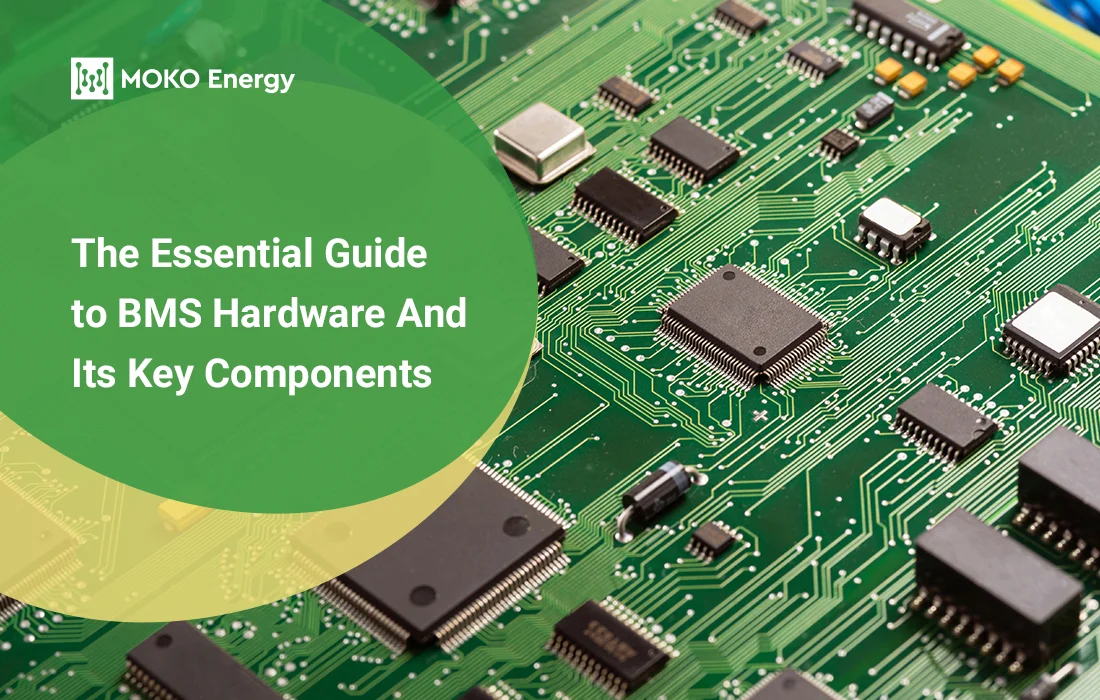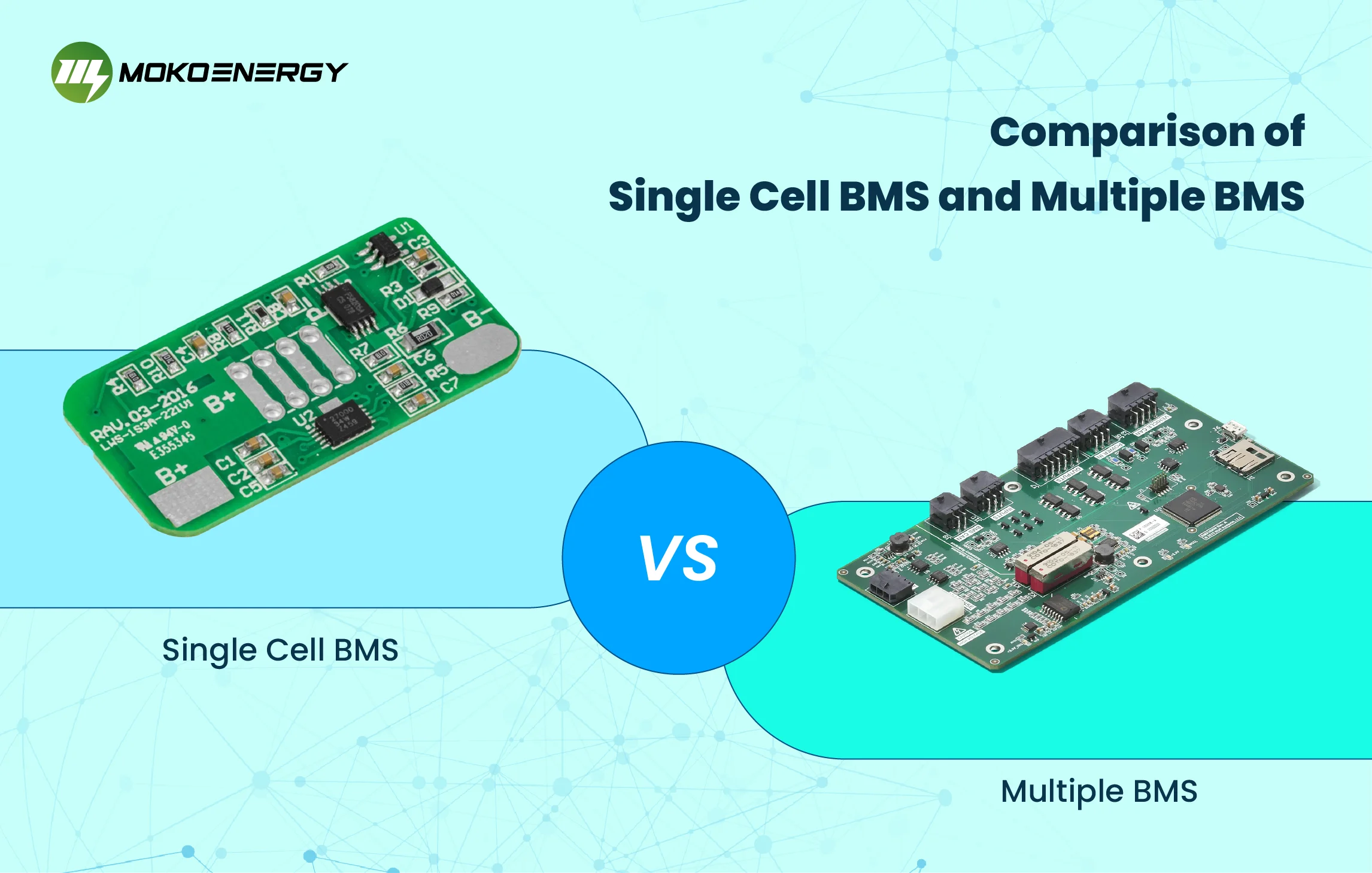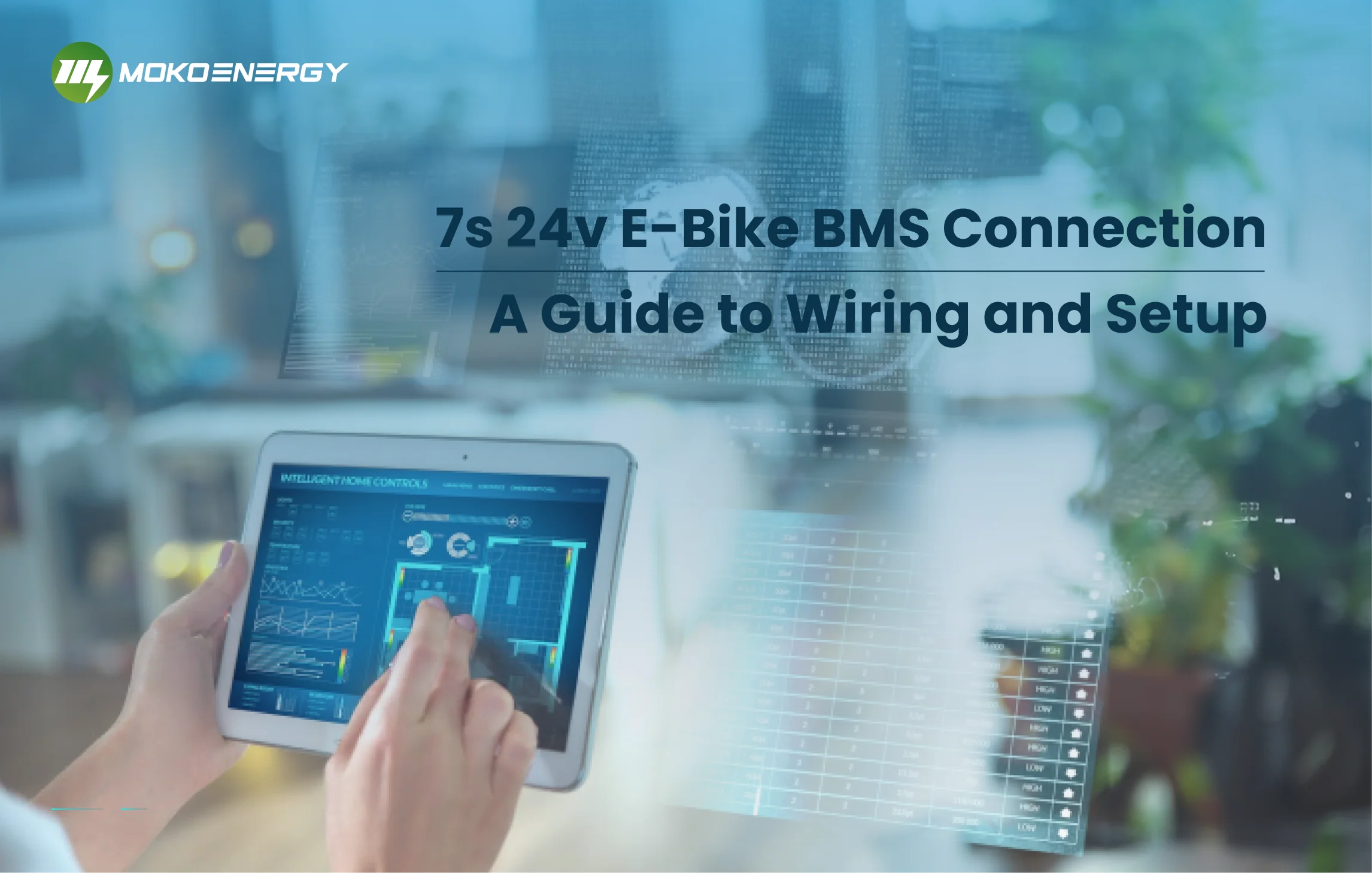The transition to lithium-ion batteries and other advanced chemistries has revolutionized everything from smartphones to electric vehicles. But safely realizing the full potential of these high-energy battery packs requires sophisticated BMS hardware. As the “brain” of the battery system, BMS hardware monitors cells, prevents issues like overcharging, and allows optimal performance. With increasing reliance on batteries, getting BMS hardware right is crucial. This guide will dive into what battery management system hardware is, design considerations, key components, applications, and how experts like MOKOENERGY can help implement custom BMS solutions.
What is BMS Hardware?
At the most basic level, BMS hardware incorporates:
- Sensors – to monitor voltage, current, temperature, and other parameters for each cell or module. High accuracy and noise immunity are important.
- Microcontroller – processes sensor signals and runs control algorithms to protect and optimize the battery. Flash memory stores firmware.
- Power electronics – MOSFETs, drivers, isolation, etc. to control contactors, current, and engage protection mechanisms.
- Communication – interfaces like CAN bus to relay sensor data and pass commands.
These components work together to form a tight control loop. The controller uses sensor feedback to model the battery state and conditions. It then applies protection and cell balancing through the power electronics, if needed. The system also provides external communication for monitoring and control.
Proper BMS hardware design is crucial for safety and reliability. For large high-voltage packs, BMS failure could lead to catastrophic outcomes. Rigorous testing and redundancy requirements are common for mission-critical applications.
Key Battery Management System Hardware Components

Microcontroller Unit (MCU)
The MCU is the core processor that runs the BMS firmware and algorithms. Key considerations when selecting the MCU include:
- Processing power – more complex analysis like impedance tracking requires higher speeds. Popular MCUs range from 50-400 MHz.
- Memory –flash, EEPROM and RAM dictate how much firmware and data can be stored. 1-2MB flash is typical for BMS applications.
- Peripherals –CAN, UART, ADC, and other integrated peripherals simplify system design.
- Operating temperature –automotive and industrial BMS may require -40 to 105°C rating.
- Packaging –QFN, TQFP, and other small packages conserve PCB space.
Popular MCU options include STM32, NXP Kinetis, Renesas RH850, and Texas Instruments C2000.
Sensors
Voltage, current, and temperature sensors provide critical battery state data. Design choices include:
- Voltage sensing –isolated vs non-isolated, Hall effect or resistive divider sensors offer various accuracy and noise tradeoffs.
- Current sensing – shunt vs hall effect options; high power systems may use multiple sensors.
- Temperature sensing – common options are thermocouples, RTDs, thermistors, and silicon temperature sensors.
- Measurement resolution –high accuracy systems use 18-24 bit ADCs. Noise filters improve signal integrity.
- Redundancy –backup sensors prevent single-point failures.
Careful sensor selection provides the accuracy, noise immunity, stability, and bandwidth needed.
Power Electronics
Power electronics for BMS include:
- MOSFETs –used for load switching, contactor control, and cell balancing. Common choices are 40-100V MOSFETs with low Rds(on).
- Gate drivers –isolate and amplify PWM signals to switch MOSFETs. Options include discrete drivers or integrated half-bridge/full-bridge driver ICs.
- Protection circuitry –fuses, TVS diodes, etc. help manage transients during switching.
- Balancing switches –additional MOSFETs or balancing ICs shunt current for cell balancing.
Proper gate drive design and PCB layout help maximize efficiency and thermal performance.
Communication Interfaces
BMS systems communicate extensively to report data and receive commands:
- CAN bus – a common choice due to noise immunity, distance capability, and automotive pedigree. CAN transceivers like the MCP2551 interface to the MCU.
- UART/Serial –simple serial communication links connect to monitoring and debugging ports. RS-232, RS-485, and isolated links are options.
- Ethernet –for high bandwidth central monitoring over IP networks. Requires a PHY like DP83848 and Ethernet controller.
- Wireless –Bluetooth, Zigbee, and WiFi allow cable-free operation where needed. External modules or wireless MCUs are solutions.
- Protocols –Battery Management System Specification (BMS-SS) and other standards help simplify development.
The needs of the application and system architecture determine the communication interfaces.
Memory
To store BMS firmware and sensor data:
- EEPROM –SPI-based chips like 25AA02 provide small amounts of non-volatile storage for parameters.
- Flash –external flash ICs (numerous BMS hardware suppliers) or onboard flash offer storage for firmware.
- SRAM – fast MCU internal SRAM holds program data. External RAM supplements where needed.
- MicroSD –removable memory cards work for data logging and parameter storage.
Power Supply
Clean, stable power is needed for BMS system electronics:
- Primary power –the battery pack itself often provides power during operation. Voltage ranges must be observed.
- Backup power – capacitors, super caps, or batteries retain power during battery disconnect.
- Regulators – onboard LDOs and DC-DC buck converters generate stable 3.3V/5V as needed.
Careful design prevents reset or damaged components if power is interrupted.
BMS Hardware Design Considerations
Several factors go into battery management system hardware design for a given application:
Battery Chemistry
Chemistry details like nominal voltage impact component selection and algorithm design. For instance, LFP systems need lower voltage ratings than NMC. Interaction with anode and cathode materials also influences charging behavior and monitoring needs.
Capacity and Topology
The number of cells and overall pack capacity affect measurement resolution needed and power requirements. Is a centralized or modular/distributed setup better? (Compare 4 BMS topologies) High-capacity systems often benefit from distributed BMS architecture.
Performance Requirements
What cell current and environmental extremes will the BMS encounter? Components must withstand mechanical shock and vibration. Levels of monitoring accuracy and speed factor into the sensor and BMS computer selection.
BMS Hardware and Software
Certain functions can be implemented in firmware vs hardware. Generally, critical monitoring and protection happens in hardware for fail-safety. Higher-level control, diagnostics, and communications use flexible software.
Cost Targets
Hardware costs increase with performance and redundancy. Industrial and automotive applications require higher standards than basic consumer electronics. Prioritizing BMS budget optimizes overall system affordability.
There are always engineering tradeoffs when architecting BMS hardware. Experts can balance these factors for an ideal design based on the application.
BMS Hardware Applications
Battery management hardware enables countless applications across industries. Common examples include:
| Application | Function |
| Electric Vehicles | BMS is crucial for large automotive battery packs, monitoring thousands of cells. Hazard prevention, thermal and charge management optimize range and lifespan. CAN bus integration allow vehicle control interaction. |
| Energy Storage | Grid and renewable energy storage systems have stringent safety and reliability demands. BMS hardware prevents issues for large battery arrays via cell monitoring and protection. |
| Uninterruptible Power Supplies (UPS) | Server UPS backup systems keep organizations running through outages. BMS hardware maintains batteries for high availability demands. It extends service life through careful monitoring and control. |
| Consumer Electronics | Lithium-ion batteries require BMS to prevent common issues like swelling. Mobile devices are space and cost-constrained but safety remains critical. |
| Medical | Battery-powered medical devices often have specialized power and reliability requirements. BMS allows safe operation in critical applications like ventilators and implants. |
| Industrial Equipment | Forklifts, robots, and tools increasingly use Lithium-ion batteries for performance. Ruggedized BMS hardware meets demanding use while avoiding downtime. |
BMS hardware ensures optimal, safe battery usage across applications, from multi-MW utility storage down to handheld tools.
BMS Hardware Suppliers Landscape
The growing BMS market has nurtured major hardware BMS suppliers alongside new entrants focused on advanced technology:
- Analog Devices–The semiconductor giant provides integrated monitoring and protection components for BMS. Their battery management ICs combine sensor inputs, computation, and power electronics.
- Texas Instruments– Similar to Analog Devices, TI produces popular monitoring and protection chips. Their BQ series helps simplify design while meeting safety needs.
- Mersen– A leader in power electronics, their contactors, fuses, and monitoring ICs meet demanding BMS specs for utilities, transport, and industry.
- Renesas– Known for microcontrollers and SoCs, Renesas BMS chips include advanced diagnostics and predictive algorithms for smart batteries.
- LION Smart– This German startup focuses on modular, distributed BMS topologies. Their systems provide high accuracy and configurability suited for large storage systems.
- MOKOENEGY– With deep experience across EV and utility storage, MOKOENERGY provides custom BMS solutions encompassing hardware, software, integration, and manufacturing.
Innovations like wireless sensing, improved diagnostics, and model-based estimation are expanding BMS hardware capabilities. This generates opportunities to better harness battery potential.
How MOKOENERGY Helps Adopt BMS Hardware?
MOKOENERGY boasts experience in engineering BMS solutions for clients across applications:
- Our in-house team covers the full spectrum of BMS technology: power electronics, microcontroller programming, sensing, algorithms, and much more.
- Starting from a blank slate, we design fully bespoke BMS hardware tailored to your specific battery setup and use case.
- We leverage an agile co-design process involving continuous client feedback to refine the system.
- Our facilities allow rapid prototyping and scaled production of BMS electronics.
- Our rigorous testing and validation ensures BMS reliability meets the highest standards.
- Global supply chain experience guarantees cost-optimized volume manufacturing.
Whether you are an emerging startup or a leading OEM, effective BMS hardware unlocks the next level of battery innovation. Contact our experts to discuss your battery management needs. Our tailored BMS hardware solutions deliver the safety, performance, and longevity of today’s cutting-edge systems demand.
Further Reading






